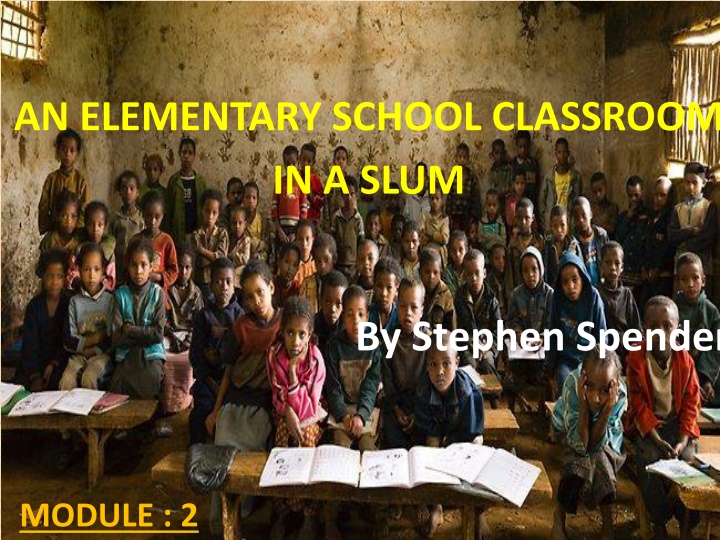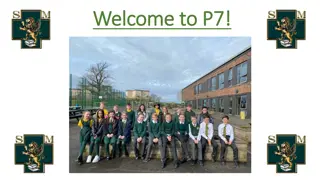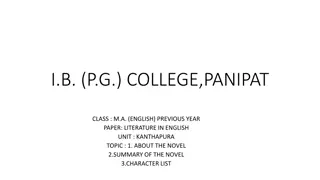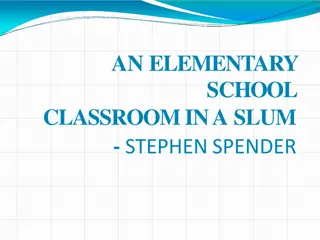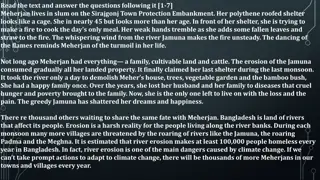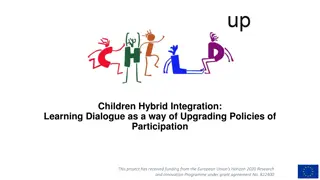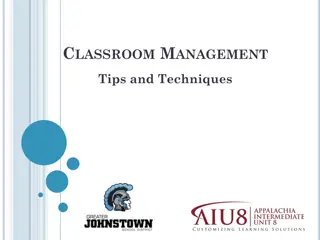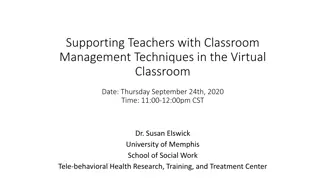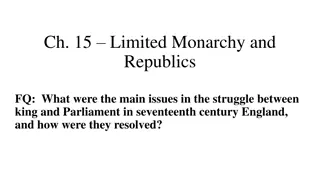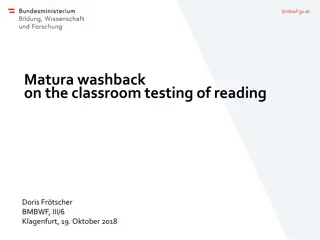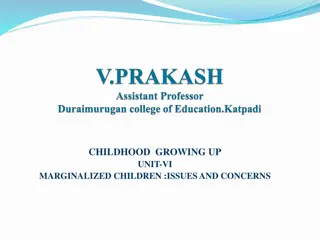Children's Struggle in a Slum Classroom
The poem "An Elementary School Classroom in a Slum" by Stephen Spender vividly portrays the challenges faced by children living in poverty. These children feel disconnected from a world full of hope and love, depicted by Shakespeare and maps showing a beautiful world beyond their reach. Living in cramped, dismal conditions, they are deprived of joy and resort to theft out of desperation, leading a bleak existence filled with hardship and despair.
Download Presentation

Please find below an Image/Link to download the presentation.
The content on the website is provided AS IS for your information and personal use only. It may not be sold, licensed, or shared on other websites without obtaining consent from the author.If you encounter any issues during the download, it is possible that the publisher has removed the file from their server.
You are allowed to download the files provided on this website for personal or commercial use, subject to the condition that they are used lawfully. All files are the property of their respective owners.
The content on the website is provided AS IS for your information and personal use only. It may not be sold, licensed, or shared on other websites without obtaining consent from the author.
E N D
Presentation Transcript
AN ELEMENTARY SCHOOL CLASSROOM IN A SLUM By Stephen Spender MODULE : 2
STANZA -3 Surely, Shakespeare is wicked, the map a bad example, With ships and sun and love tempting them to steal For lives that slyly turn in their cramped holes From fog to endless night? On their slag heap, these children Wear skins peeped through by bones and spectacles of steel With mended glass, like bottle bits on stones. All of their time and space are foggy slum. So blot their maps with slums as big as doom Wicked: evil Slyly: in a manipulative manner Cramped: confined Slag: stony waste matter Mended: repaired Blot: to mark with a spot Doom: disaster
SHAKESPEARE IS WICKED The poet further says that these children living in the slum area have faced so many hardships that they feel every other person to be their enemy. For them Shakespeare is an evil manbecause he portrays a world of optimism and hope and love in his writings which is in complete contrast to the bleak future and a life full of gloom and despair, which the slum children lead.
They dont find the map to be a good example The map on the wall gives them false hopes as it makes them aware of the beautiful world given by god and makes them feel sorry that they are far away from this world which is full of opportunities. The scenic beauty portrayed in the map cannot give any respite to them from their despair, instead it only adds to their miseries. They were never liked or loved by anyone. Therefore they hate almost everyone.
They feel deprived of all exiting sensations of the sun, the ships, and the emotions of love. The ship , sun and love symbolize joy and happiness which these children can only dream of . Their desire forces them to snatch and steal what they can't have and thus end up criminals.
THEIR CRAMPED HOLES These slum children live in cramped holes(dingy, congested huts) , striving and struggling for survival in the small, dirty rooms from fog to endless night from foggy mornings till long endless nights, trying to meet both ends, trying to earn their daily bread .
These kids are so thin that one can easily see their bones through the thin layer of skin. Their skin is like the thin layer of cloth and the bones beneath are visible through the skin. These kids suffer from malnutrition. They wear spectacles of steel with mended glass discarded spectacles by the rich, mended (repaired) and worn. The map of their future are already blotted with gloom. Slums are the reality for these children, their home, where they spend their life.
Literary devices: Metaphor: 1. Their homes are very small like holes (cramped holes) 2. From fog to endless night(future of the children) 3.Wear skins peeped through by bones (emaciated bodies) Simile- like bottle bits on stones Alliteration: Use of f sound (From fog) Symbol: ships (adventure, beautiful lands), Sun(enlightenment, purity), map with slums as big as doom( the grim reality)
STANZA -4 Unless, governor, inspector, visitor, This map becomes their window and these windows That shut upon their lives like catacombs, Break O break open till they break the town And show the children to green fields, and make their world Run azure on gold sands, and let their tongues Run naked into books the white and green leaves open History theirs whose language is the sun. Catacombs: tomb, cemetery Azure: deep blue
The poet says that the government should take notice of the problems being faced by these kids. There is a need to break the restrictions which are put on them due to poverty and lack of resources. He wants the governor and people in power to help these kids in achieving their dreams. As this will take them away from fog to azure sky, the poet here wants to say that in this way the kids can be taken away from the darkness of their present to a bright future.
He wants these kids to experience the sands and the beauty of nature as this will led to a desire of gaining knowledge. They will then go through the white and green leaves. Here white leaves depict books and green leaves depict nature. This will then result in their progress and they will be able to paint a bright future for themselves.
The poet ends on a note of positivity and wants opportunities to be available to these children. The people who strive for knowledge are the ones who create history. The ones who are let free are the ones who will create history. People who outshine others, who glow like the sun, who break free from the constraints of their restricted life are the ones who create history.
Literary devices Metaphor: books and nature are expressed in form of white and green leaves (the white green leaves open) Simile: their lives like catacombs Anaphora: Use of repeated words in two consecutive lines (Run azure and Run naked) Symbols: green fields, gold sand( colour, happiness, nature and opportunities). 2. Run azure- experience the rich colour
Assignment 1. To whom does the poet in the poem, An Elementary School Classroom in a Slum make an appeal? What is his appeal? 2. What does the poet wish for the children of the slums? 3. What message does Stephen Spender convey through the poem, An Elementary School Classroom in a Slum ?
